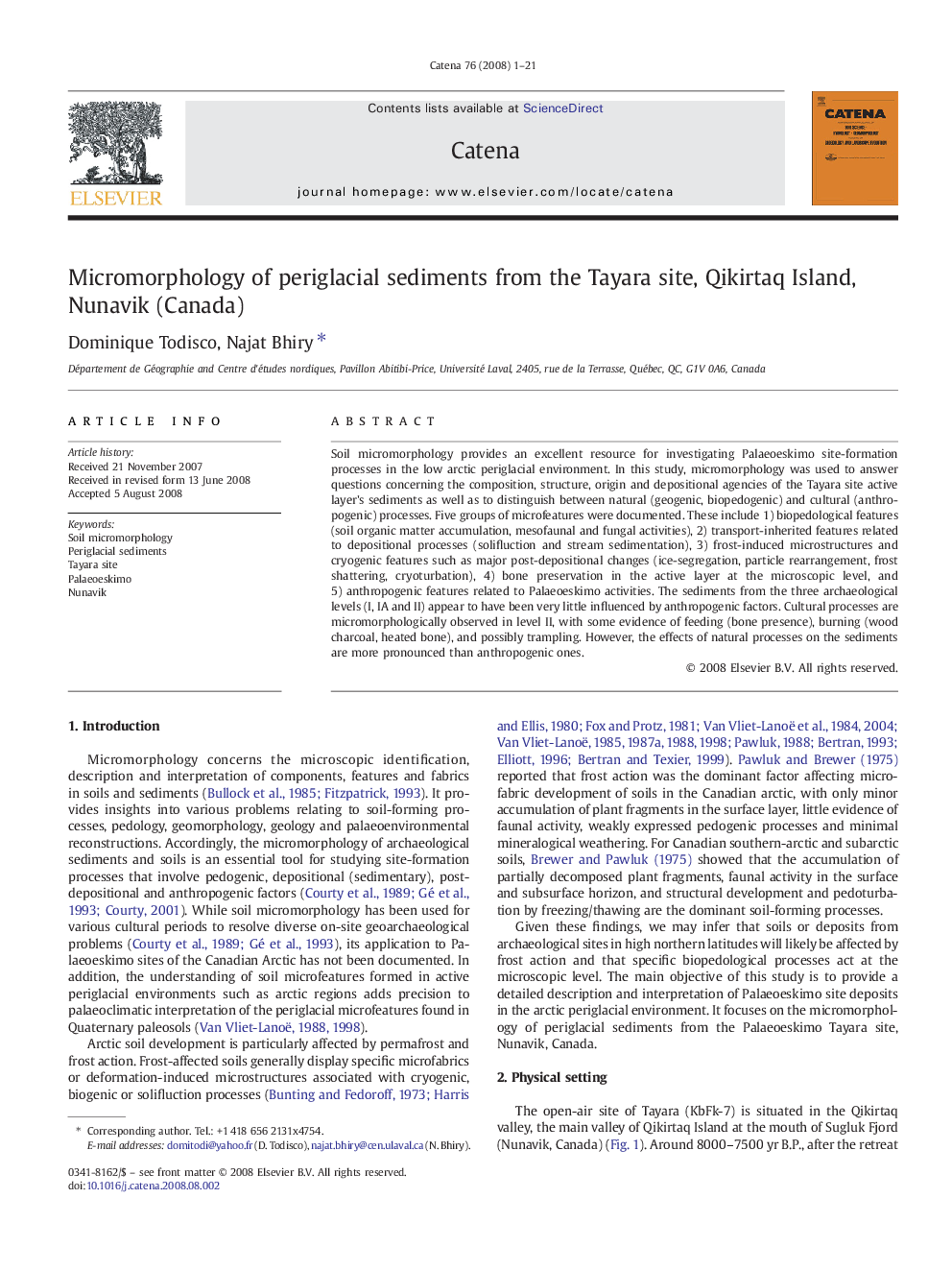| Article ID | Journal | Published Year | Pages | File Type |
|---|---|---|---|---|
| 4572264 | CATENA | 2008 | 21 Pages |
Soil micromorphology provides an excellent resource for investigating Palaeoeskimo site-formation processes in the low arctic periglacial environment. In this study, micromorphology was used to answer questions concerning the composition, structure, origin and depositional agencies of the Tayara site active layer's sediments as well as to distinguish between natural (geogenic, biopedogenic) and cultural (anthropogenic) processes. Five groups of microfeatures were documented. These include 1) biopedological features (soil organic matter accumulation, mesofaunal and fungal activities), 2) transport-inherited features related to depositional processes (solifluction and stream sedimentation), 3) frost-induced microstructures and cryogenic features such as major post-depositional changes (ice-segregation, particle rearrangement, frost shattering, cryoturbation), 4) bone preservation in the active layer at the microscopic level, and 5) anthropogenic features related to Palaeoeskimo activities. The sediments from the three archaeological levels (I, IA and II) appear to have been very little influenced by anthropogenic factors. Cultural processes are micromorphologically observed in level II, with some evidence of feeding (bone presence), burning (wood charcoal, heated bone), and possibly trampling. However, the effects of natural processes on the sediments are more pronounced than anthropogenic ones.
